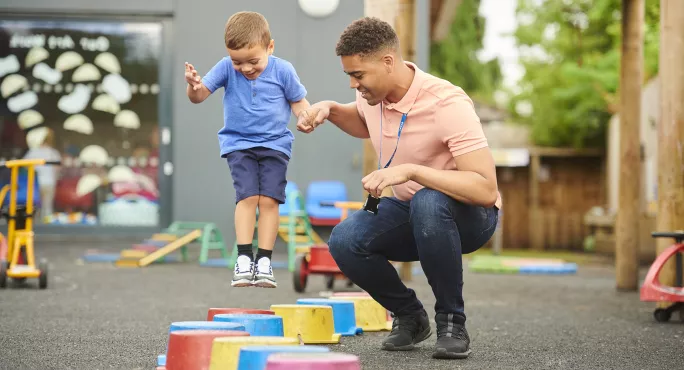- Home
- 4 myths about male primary teachers
4 myths about male primary teachers

There are plenty of gender-based myths about education out there - and just as many articles and blogs on a mission to put the record straight.
As men in primary education - only 15 per cent of the total workforce - we believe that it is time that we bust a few myths of our own.
Last week the group I belong to, @MenTeachPrimary, hosted the weekly educhat #Primary Rocks and we asked the community what stereotypes and myths they had encountered as men in primary.
Myths about male teachers in primary schools
The responses ranged from the comical (“On my first day I was asked to lift a fridge with the caretaker”) to the appalling (“potential child abusers”), but a very clear top four emerged.
1. Boys prefer male teachers and need them as role models
Not only does this devalue the vital part that female teachers play as role models for all children, but research has actually also shown that for the majority of boys and girls, gender does not matter: children value the teacher’s individual ability and the level of care they provide.
Moreover, studies exploring a link between pupil achievement and teacher gender have found no relationship here either.
2. Male teachers are better at behaviour
It is commonly assumed that men possess innate abilities to deal with all sorts of challenging behaviour, and so will be given the “trickier” classes to teach.
In the eyes of many, effective behaviour management involves zero tolerance, punitive sanctions, shouting and use of intimidating body language; a more aggressive approach that society delineates as masculine.
Such a belief only serves to undermine the authority of female teachers (who are, just to be clear, equally adept at managing challenging behaviour) and, in some cases, puts pressure on male teachers to conform to damaging stereotypes.
And, of course, there are many different ways to manage behaviour - zero tolerance is just one approach.
3. Male teachers aren’t right for early years
The perception of primary teaching as a female job is particularly entrenched in early years, where only 2 to 3 per cent of the workforce are male.
Teaching children in this age range is commonly seen as requiring a more maternal, nurturing and caring approach, all qualities that society perceives as being more feminine. But men can, obviously, be all of these, too.
4. All male teachers want to be headteachers
There are multiple elements at play here, from traditional views that the man must be the breadwinner to a lack of flexible-working arrangements in many schools for women, who usually take on greater childcare responsibilities.
It is probably true that a sizeable proportion of men are striving towards headship but certainly not all; maybe it is time to reassure the majority who don’t want this that remaining in the classroom is completely OK.
These four myths and all the others that exist are harmful because they have a damaging effect on recruiting men into primary teaching. So what can we do to challenge them?
Since setting up @MenTeachPrimary, we have been inundated with stories from male teachers who are helping to deconstruct the many stereotypes that exist: men who love teaching in early years; men who are not interested in headship; men who do not conform to the disciplinarian approach. The list goes on.
We should all challenge these myths whenever we hear them and encourage a more informed dialogue. We must actively ensure that we are not judging teachers based on their gender rather than their ability.
It’s time to be done with these stereotypes once and for all. And we can make that happen by allowing male primary teachers to be more visible and have their stories heard.
Mike Keys and Matt Withers run @MenTeachPrimary, a Twitter account formed in March this year
Keep reading for just £1 per month
You've reached your limit of free articles this month. Subscribe for £1 per month for three months and get:
- Unlimited access to all Tes magazine content
- Exclusive subscriber-only stories
- Award-winning email newsletters